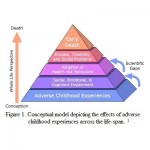Healing Past Relational Trauma with Wholehearted Presence
The swirling busyness and restless energy settled and a profound stillness permeated the room, enveloping the group like a soft feather blanket. Sitting in silence and sensing the body was unfamiliar territory for most of the two-dozen workshop participants. After all, for many of them, the body had long-been associated with shame, self-judgment, discomfort, and trauma. Yet, there they were, courageously bringing compassionate awareness to their embodied experience, one moment at a time. Opening to the life that had been refused, again and again, until that moment.¹
This is a description of the first day of the first REAC²H workshop, which was conducted with a group of female survivors of childhood maltreatment. REAC²H is an acronym that stands for Restoring Embodied Awareness, Compassionate Connection, and Hope. It is an innovative approach to healing past relational trauma by cultivating present-moment awareness and self-compassion. The workshop was designed by Dr. Jon G. Caldwell, DO, PhD after years of research and clinical work in the fields of traumatology, attachment theory, affective neuroscience, and contemplative practices.
The REAC²H workshop was specifically designed to help individuals who have experienced “relational trauma”, which encompasses various kinds of emotional, physical, and sexual abuse that occur in the context of close relationships. Relational trauma has meaningful effects on the attachment system – an innate, biological system that facilitates interpersonal connection to adaptively shape human development. Thus, relational trauma and the resulting disturbances in attachment can have profound effects on a person’s developmental trajectory across the lifespan.









